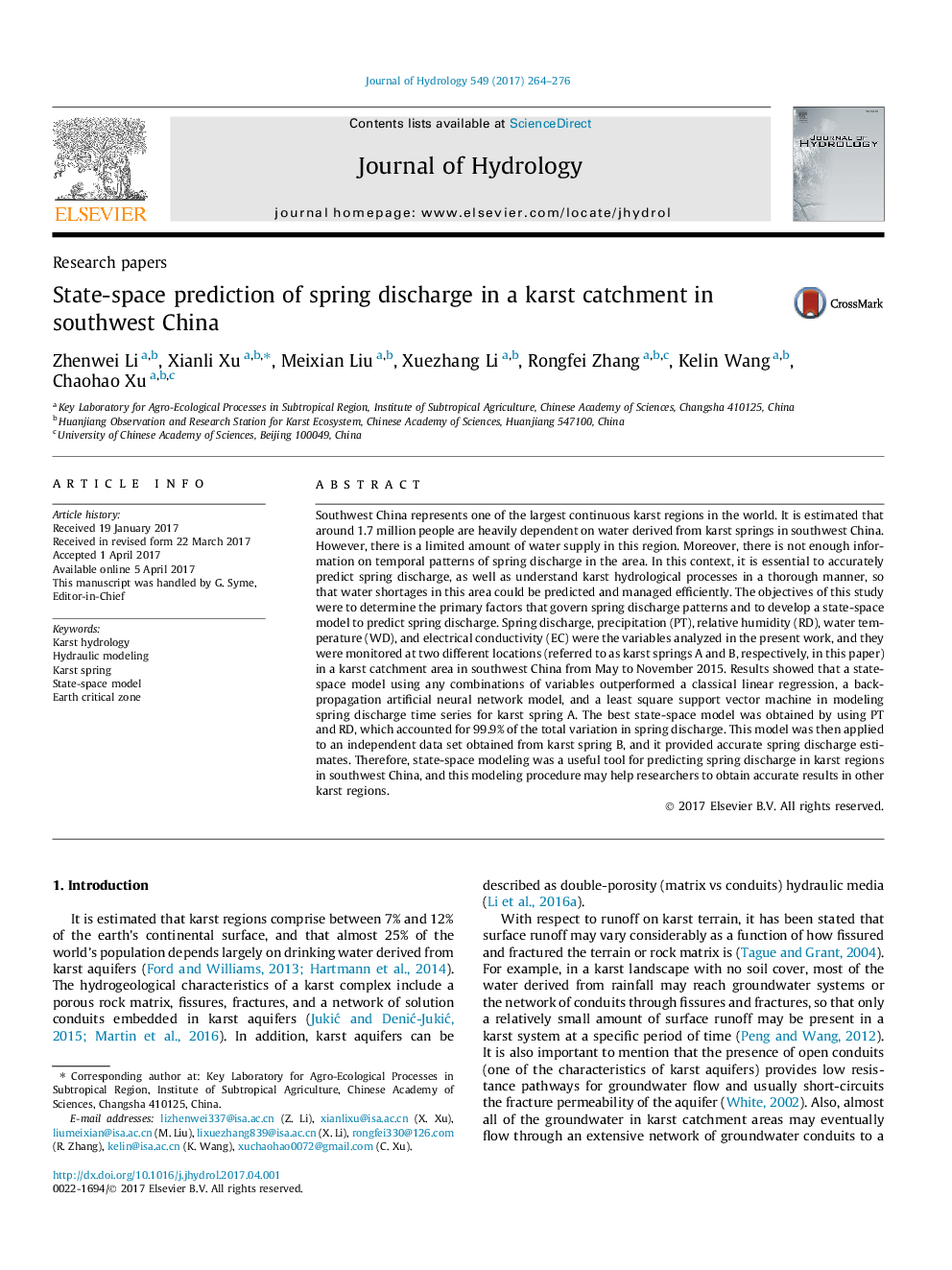| کد مقاله | کد نشریه | سال انتشار | مقاله انگلیسی | نسخه تمام متن |
|---|---|---|---|---|
| 5770982 | 1629905 | 2017 | 13 صفحه PDF | دانلود رایگان |
- Relationships between spring discharge (SD) and its influencing factors were quantified.
- State-space model is a better approach to describe the temporal pattern of SD.
- Precipitation and relative humid were the principle factors influencing the temporal variation of SD.
- State-space model is demonstrated to be an effective tool for predicting SD.
Southwest China represents one of the largest continuous karst regions in the world. It is estimated that around 1.7 million people are heavily dependent on water derived from karst springs in southwest China. However, there is a limited amount of water supply in this region. Moreover, there is not enough information on temporal patterns of spring discharge in the area. In this context, it is essential to accurately predict spring discharge, as well as understand karst hydrological processes in a thorough manner, so that water shortages in this area could be predicted and managed efficiently. The objectives of this study were to determine the primary factors that govern spring discharge patterns and to develop a state-space model to predict spring discharge. Spring discharge, precipitation (PT), relative humidity (RD), water temperature (WD), and electrical conductivity (EC) were the variables analyzed in the present work, and they were monitored at two different locations (referred to as karst springs A and B, respectively, in this paper) in a karst catchment area in southwest China from May to November 2015. Results showed that a state-space model using any combinations of variables outperformed a classical linear regression, a back-propagation artificial neural network model, and a least square support vector machine in modeling spring discharge time series for karst spring A. The best state-space model was obtained by using PT and RD, which accounted for 99.9% of the total variation in spring discharge. This model was then applied to an independent data set obtained from karst spring B, and it provided accurate spring discharge estimates. Therefore, state-space modeling was a useful tool for predicting spring discharge in karst regions in southwest China, and this modeling procedure may help researchers to obtain accurate results in other karst regions.
Journal: Journal of Hydrology - Volume 549, June 2017, Pages 264-276
